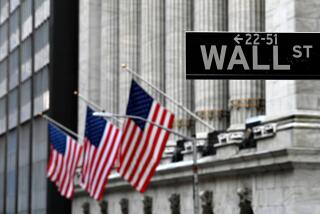These Are the ‘90s: Keep Sharp Eye on Your Mutual Fund
- Share via
Quick--can you name your stock mutual fund’s five largest investments? And do you know whether your fund’s expenses are higher or lower than average?
If these details seem trivial, you may still have an ‘80s mentality about fund investing: Buy it and forget it. Unfortunately, that’s becoming increasingly dangerous in the ‘90s.
It was hard to lose money in stock funds during the ‘80s bull market. Not so in this bull market. Some investment themes are working beautifully this time, but others have been disasters.
And because high returns overall are harder to come by in this market, your stock fund’s performance depends on more than just the shares it owns: It also matters how much cash the manager leaves aside, how often the portfolio is turned over (active trading runs up costs) and how deeply total fund expenses cut into its return.
How can you check your fund against the rest? Over the last month, you should have received a semiannual report from your fund for the six months ended June 30, or thereabouts. Use that report to answer the following questions:
* Which industries--and stocks--are most heavily owned? Most fund investors generally know the category in which their fund fits--growth, for example, or growth and income. But two different growth fund managers can have dramatically different ideas about what constitutes a growth stock today.
Whether your fund is beating the broad market averages this year or lagging them, you should understand why. Are you comfortable with the stocks the manager owns, as listed in the midyear report? Is the fund underinvested in a particular area that you would like to own--technology, for example, or telecommunications?
Also, how concentrated is your fund? If the manager owns relatively few stocks and/or industries, that suggests a high level of conviction. “If the fund is right (in its bets), concentration is better,” notes Sheldon Jacobs, editor of the No-Load Fund Investor newsletter in Irvington-on-Hudson, N.Y. “But concentration also means higher risk,” he warns.
Portfolio makeup is particularly important for investors who have purchased a number of different funds. Your goal may have been to own stocks across many industries. But if you check each portfolio, and they own a lot of the same stocks, you may not be anywhere near as diversified as you thought.
* Is the fund fully invested--or is the manager building cash? Besides showing the stocks owned, a fund’s investment listing in the midyear report also will show the percentage of assets held in cash. That category may be called short-term securities, commercial paper, repurchase agreements or some combination of the three.
Basically, all of those refer to short-term investments that a manager uses as a parking place for money that may be invested in stocks later. Most funds always hold at least a small portion of assets (often about 5%) in cash, to meet potential redemptions by investors. As of July 31, fund tracker Morningstar Inc. calculates that the average stock fund had 9.5% of total assets in cash, in part reflecting the wave of new money the funds received from investors in the spring.
If your fund’s cash level is higher than average, it suggests the manager can’t find many stocks worth buying. If you feel the same, no problem. But if you’re bullish--and your manager isn’t--the fund’s high cash position means your return will probably lag if the market keeps rising. To put it another way, a high cash position means “you may own fewer stocks than you thought,” says Morningstar analyst John Rekenthaler.
* Are fund expenses above or below average? The cost of fund management is a gut issue that will probably become more so in the years ahead. The fund industry argues that investors are getting a great deal--professional management and top-notch service for an annual fee usually between 0.5% and 3% of your investment.
But there’s the problem: That 0.5% to 3% range is very wide, relatively speaking. If a fund earns 9% in a year and charges you 3%, your return is 6%. If another fund earns 9% and costs just 0.5% to run, you keep 8.5%. Over long periods, low expenses make a big difference in your return.
In the midyear report, the fund should list a table that includes “ratio of expenses to average net assets.” Some wrap all fees into that listing; others may list general expenses (such as legal fees) separate from the management fee, in which case you must add the two. Usually, international and small-stock funds cost more to run because those securities are harder to trade and keep track of; blue-chip funds and bond funds cost much less.
Are you paying more than the average expense ratio in your fund category? Then your return also ought to be above average. If it isn’t--and this has been a problem for a year or more--you have a right to demand that the fund explain why.
Fund Benchmarks
Trying to judge your mutual fund against others? Here are some fund benchmarks, by category. Cash level measures cash as a percentage of total fund assets as of July 31. Turnover measures average annualized trading activity in the funds. Average portfolio expenses are shown as a percentage of fund assets, also annualized.
Cash Portfolio Portfolio Category level turnover expenses Global 9.8% 76% 1.96% Aggressive growth 10.5 145 1.74 International 9.3 58 1.68 Small company 10.5 82 1.39 Growth 10.6 83 1.30 Growth and income 7.5 65 1.25 Equity-income 7.8 57 1.23 Stock fund average 9.5 80 1.45 Bond fund average 4.8 99 0.84
Source: Morningstar Inc.
More to Read
Inside the business of entertainment
The Wide Shot brings you news, analysis and insights on everything from streaming wars to production — and what it all means for the future.
You may occasionally receive promotional content from the Los Angeles Times.









